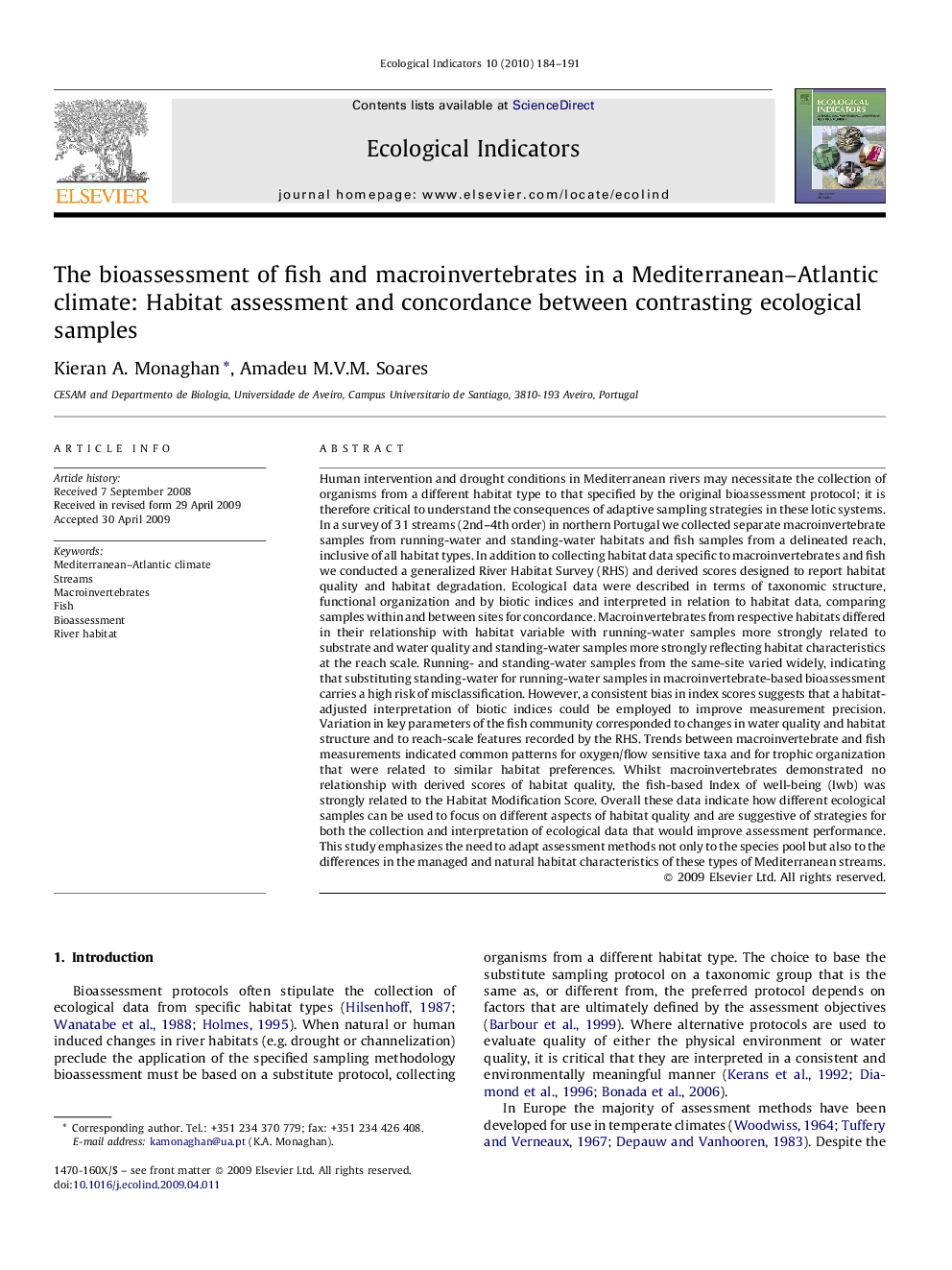| Article ID | Journal | Published Year | Pages | File Type |
|---|---|---|---|---|
| 4374272 | Ecological Indicators | 2010 | 8 Pages |
Human intervention and drought conditions in Mediterranean rivers may necessitate the collection of organisms from a different habitat type to that specified by the original bioassessment protocol; it is therefore critical to understand the consequences of adaptive sampling strategies in these lotic systems. In a survey of 31 streams (2nd–4th order) in northern Portugal we collected separate macroinvertebrate samples from running-water and standing-water habitats and fish samples from a delineated reach, inclusive of all habitat types. In addition to collecting habitat data specific to macroinvertebrates and fish we conducted a generalized River Habitat Survey (RHS) and derived scores designed to report habitat quality and habitat degradation. Ecological data were described in terms of taxonomic structure, functional organization and by biotic indices and interpreted in relation to habitat data, comparing samples within and between sites for concordance. Macroinvertebrates from respective habitats differed in their relationship with habitat variable with running-water samples more strongly related to substrate and water quality and standing-water samples more strongly reflecting habitat characteristics at the reach scale. Running- and standing-water samples from the same-site varied widely, indicating that substituting standing-water for running-water samples in macroinvertebrate-based bioassessment carries a high risk of misclassification. However, a consistent bias in index scores suggests that a habitat-adjusted interpretation of biotic indices could be employed to improve measurement precision. Variation in key parameters of the fish community corresponded to changes in water quality and habitat structure and to reach-scale features recorded by the RHS. Trends between macroinvertebrate and fish measurements indicated common patterns for oxygen/flow sensitive taxa and for trophic organization that were related to similar habitat preferences. Whilst macroinvertebrates demonstrated no relationship with derived scores of habitat quality, the fish-based Index of well-being (Iwb) was strongly related to the Habitat Modification Score. Overall these data indicate how different ecological samples can be used to focus on different aspects of habitat quality and are suggestive of strategies for both the collection and interpretation of ecological data that would improve assessment performance. This study emphasizes the need to adapt assessment methods not only to the species pool but also to the differences in the managed and natural habitat characteristics of these types of Mediterranean streams.
